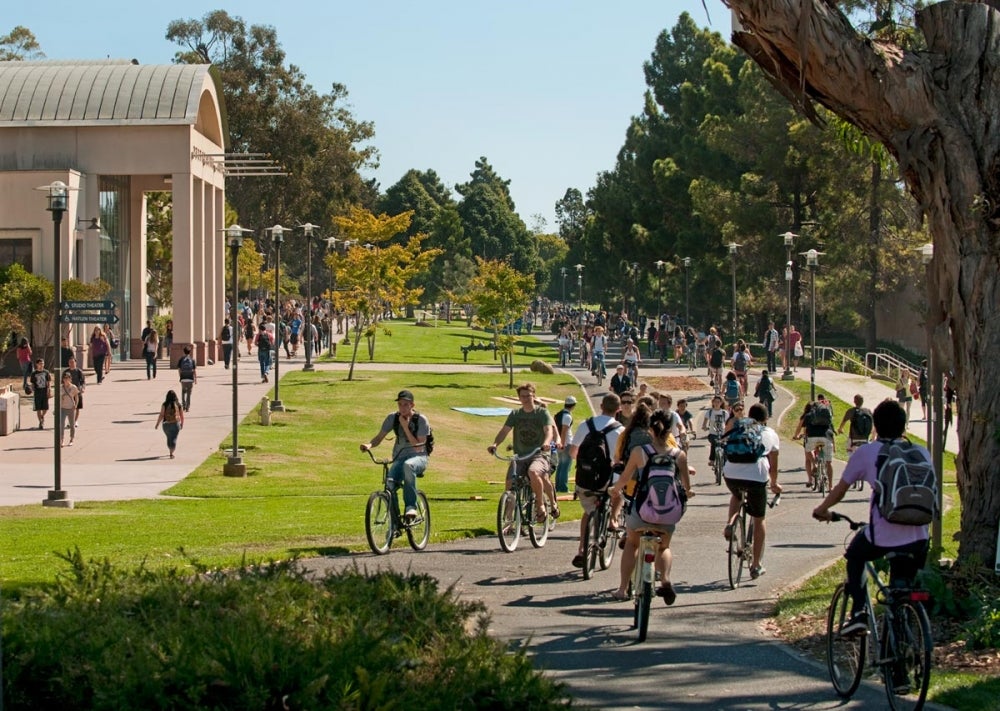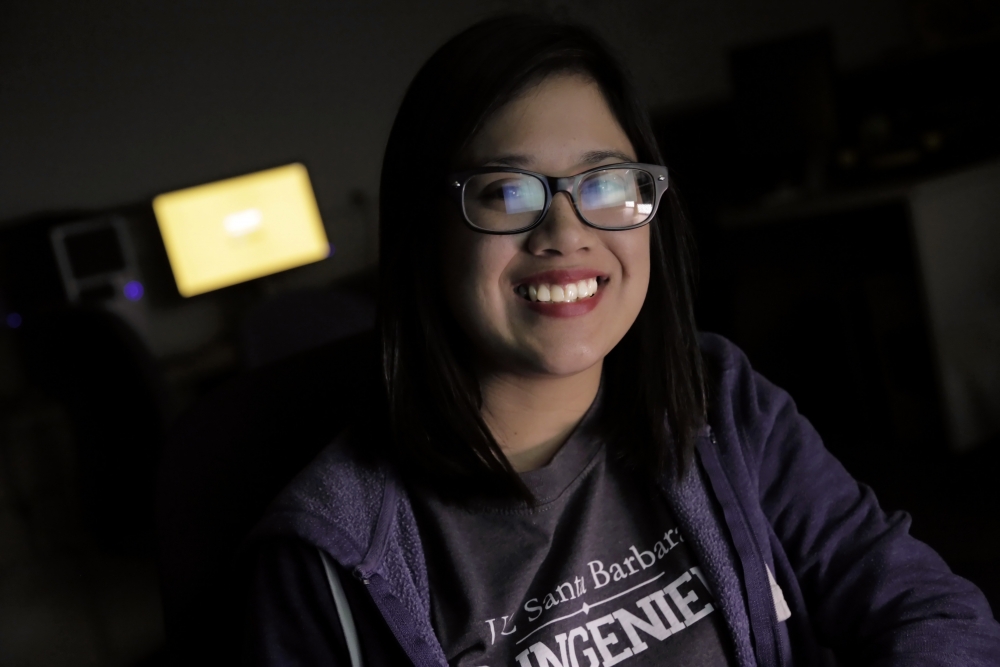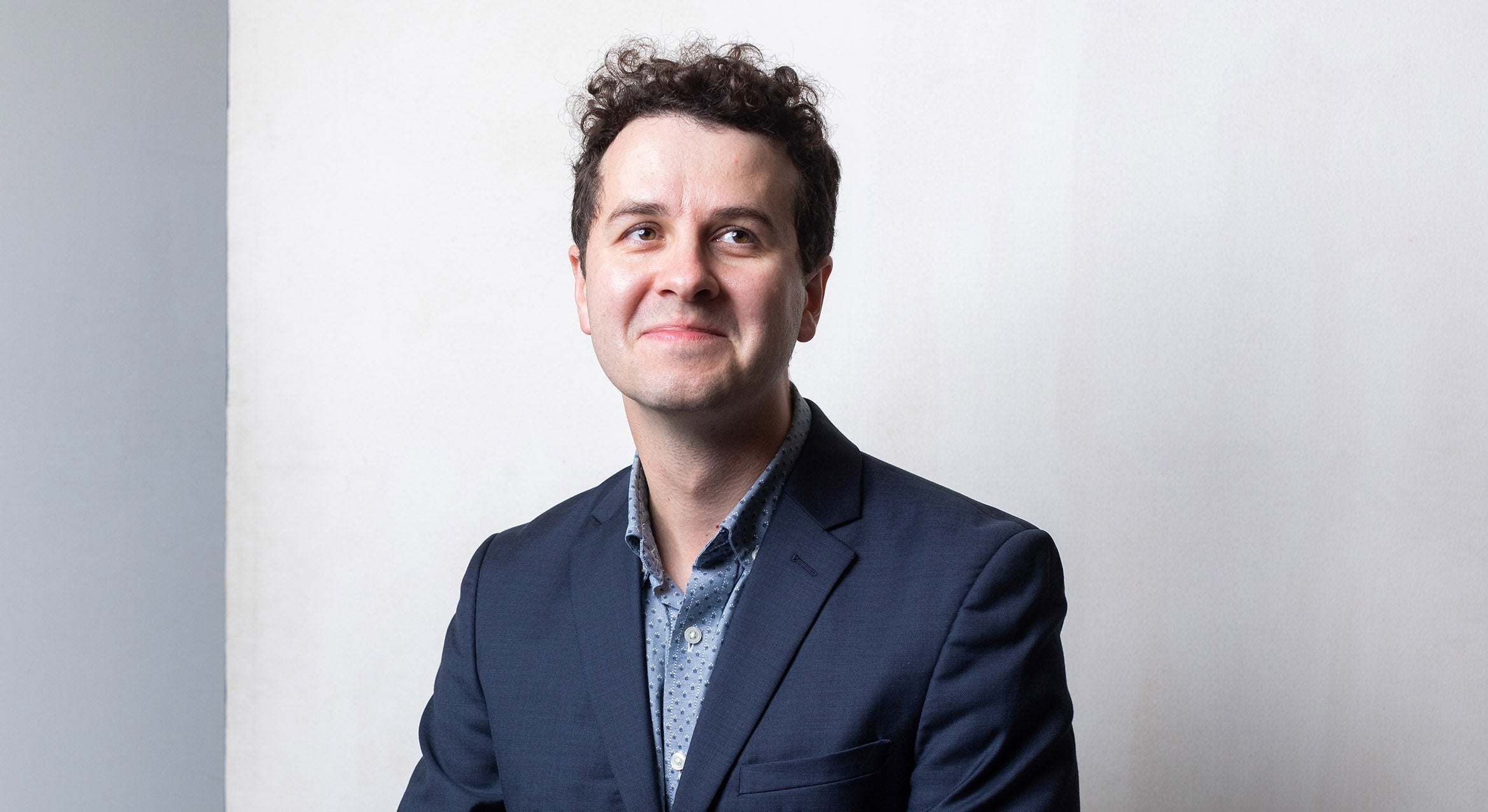
A Commitment to Diversity

For as long as she can remember, Jocelyn Ramirez enjoyed tinkering with electronics and, in general, figuring out how things work. So as a Paloma Valley High School honors student, it made perfect sense that she would set her sights on an engineering-related degree, and that she would choose UC Santa Barbara as the place to make it happen.
Now a senior at UCSB, Ramirez is completing her bachelor’s degree in computer science. A first-generation college student, she credits UCSB with providing not only tremendous educational opportunities, but also with the academic resources and services that helped her succeed. After graduating in June, Ramirez will begin her career with a job at Raytheon’s Space and Airborne Systems division in Long Beach.
“Immediately after starting at UCSB I joined Los Ingenieros,” she said. “It gave me an opportunity to meet people from similar backgrounds and with similar interests.” These led to her involvement in two internship programs — California Alliance Minority Participation and the Summer Applied Biotechnology Research Experience. She also joined UCSB’s MESA (Mathematics, Engineering, Science Achievement) program, which enabled her to take part in outreach activities.
“It was only through Los Ingenieros that I realized how possible it was for someone like me to gain an engineering degree,” said Ramirez.
In recognition of its commitment to students like Ramirez, UCSB has been named a Hispanic-Serving Institution (HSI) by the Hispanic Association of Colleges & Universities. With six Nobel Laureates on its faculty and a ranking among the top 10 public universities in the country, UCSB is the only HSI that is also a member of the prestigious Association of American Universities.
HSI’s are defined as colleges or universities in which Hispanic enrollment comprises a minimum of 25 percent of the total enrollment. Total enrollment includes undergraduate and graduate students, both full- and part-time.
In conjunction with its HSI status, UCSB is now eligible to apply for grants from the U.S. Department of Education, the National Endowment for the Humanities and the U.S. Department of Agriculture, among others, to fund a variety of initiatives, including support services for all students, faculty development, and the acquisition of scientific or laboratory equipment for teaching.
“I am extremely proud that UC Santa Barbara has been recognized as a Hispanic-Serving Institution by the Hispanic Association of Colleges & Universities,” said UCSB Chancellor Henry T. Yang. “This milestone achievement reflects our vision and decades of collaborative effort and commitment to enhance excellence and diversity at UC Santa Barbara and to provide the best possible educational opportunities for all of our students.
“During this journey, I have had the privilege of seeing our Hispanic student population grow from 11 percent to 27 percent today, along with many other splendid achievements. For example, our highly regarded Department of Chicana and Chicano Studies became the first to establish a doctoral program in the field. Our faculty, staff, students, and alumni work tirelessly to make UC Santa Barbara a place that welcomes individuals of all backgrounds, and with this designation, we celebrate our shared commitment.”
Said UC President Janet Napolitano, “We’re proud that UC Santa Barbara has joined our Riverside, Santa Cruz and Merced campuses as Hispanic-Serving Institutions, and we look forward to other University of California campuses achieving that distinction. It’s vitally important to the university and state that we provide the same level of access and quality to current and future generations of California high school graduates that past generations have enjoyed.”
David Marshall, UCSB Executive Vice Chancellor, noted, “The designation reflects our longstanding commitment to diversity and excellence. It also will open doors to new opportunities for all of our students.”
As much as the HSI designation means for UCSB, it also represents a degree of success for education in California as a whole. “As a Hispanic-Serving Institution, UCSB is perfectly positioned to play a central role in educating the future leaders of California and in developing much needed research about one of the state’s most important and fastest growing demographic groups,” said George Lipsitz, professor of Black Studies and of sociology. “But it is not just a victory for Latinos. It would be a mistake to make it that small. Everyone benefits from the ways in which the HSI designation bolsters the university’s ability to blend cosmopolitan inclusion with academic excellence.”
“UCSB’s standards for admission are very high, and the quality of our students has been rising steadily,” said Carl Gutiérrez-Jones, professor of English and UCSB’s acting dean of undergraduate education. To achieve this milestone — having an undergraduate population of more than 25 percent Latino students — is a testament to the success of the pipeline that is preparing all of our youth to compete at the very highest level.”
Gutiérrez-Jones added that UCSB is committed to giving the best education possible to the brightest and most motivated students, regardless of family income or background. “Most of all, our undergraduate education is driven by the value we place on intellect and hard work,” he said. “Gaining HSI status confirms that we have made important headway against biases and stereotypes that made a university education an unreachable dream for many in the past.”
María Herrera-Sobek, associate vice chancellor for diversity, equity and academic policy at UCSB cited the campus as a leader in diversity issues. “The fact that Hispanic and Latino students choose to enroll here demonstrates that they are aware that UCSB is a diversity-friendly community, that we have a welcoming social environment for all students — including students of color — and we will continue to work to make this even better in the future.”
While the designation of UCSB as a Hispanic-Serving Institution is a great honor, it presents an even greater opportunity, according to Lipsitz. “A changing university in a changing world has the opportunity to explore new possibilities, to develop new research projects, to design new classroom pedagogies, to propose new curricular innovations and to negotiate new definitions of community service that draw on the experiences, energies and imaginations of a diverse campus.”
The HSI designation is, in many ways, both the result of — and a benefit to — UCSB’s outreach efforts. “It shows that we’ve accomplished our goal of making the student population of UCSB more reflective of the California population,” said Lisa Przekop, director of admissions.
Among fall 2014 incoming freshmen, Hispanic students were more than twice as likely to be first-generation college students (75 percent) compared to non-Hispanic students (32 percent). In addition, they were more likely to have a diverse language background (only 29 percent are English-only speakers) as opposed to non-Hispanic students (55 percent English-only).
What’s more, Hispanic and non-Hispanic students had same high school grade point averages.
When asked about their experiences at UCSB, graduating seniors and recent alumni are overwhelmingly positive in their responses. Similar to their non-Hispanic classmates, over half of Hispanic students (55 percent) report engaging in research or creative activities with faculty members while at UCSB. Also, a higher proportion of Hispanic graduating seniors (87 percent) plan to pursue graduate education compared to non-Hispanic students.
“I felt [very] comfortable as a member of the campus community because the various resources and services available to students helped me gain confidence in my ability to succeed,” said alumna María Reyes. The recipient of the 2014 Storke Award, Reyes graduated in June and is currently pursuing a Masters in Social Work at the University of Southern California.
“The fact that faculty, staff and administrators embraced diversity was something I found to be the most beneficial in welcoming students of different ethnic backgrounds, and, in particular, those members of underrepresented groups,” she continued.
Since 1999, UCSB has awarded baccalaureate degrees to more than 12,000 Hispanic students, and the percentage of bachelor’s degrees awarded has increased from 12 percent that year to 22 percent in 2014.
UCSB’s Office of Admissions has been conducting student outreach throughout California for many years, making sure to connect not only with schools that have traditionally sent students to UC campuses but also to economically disadvantaged schools to encourage first-generation college-bound students to consider higher education.
“This fall we participated in more than 600 school visits and college fairs at high schools and community colleges and spoke with over 80,000 students and parents,” said Przekop. “Many people have a stereotype about the Santa Barbara community, and, in fact, we regularly hear from school counselors who visit UCSB that they are surprised to see the campus is so ethnically diverse.
“This new designation will help significantly with our outreach efforts,” Przekop continued. “We will make a point of ensuring that word of this special designation reaches families across the state as well as school guidance personnel.”
UCSB is the fourth UC campus to be recognized as an HSI. The others include UC Merced, UC Riverside and UC Santa Cruz.



